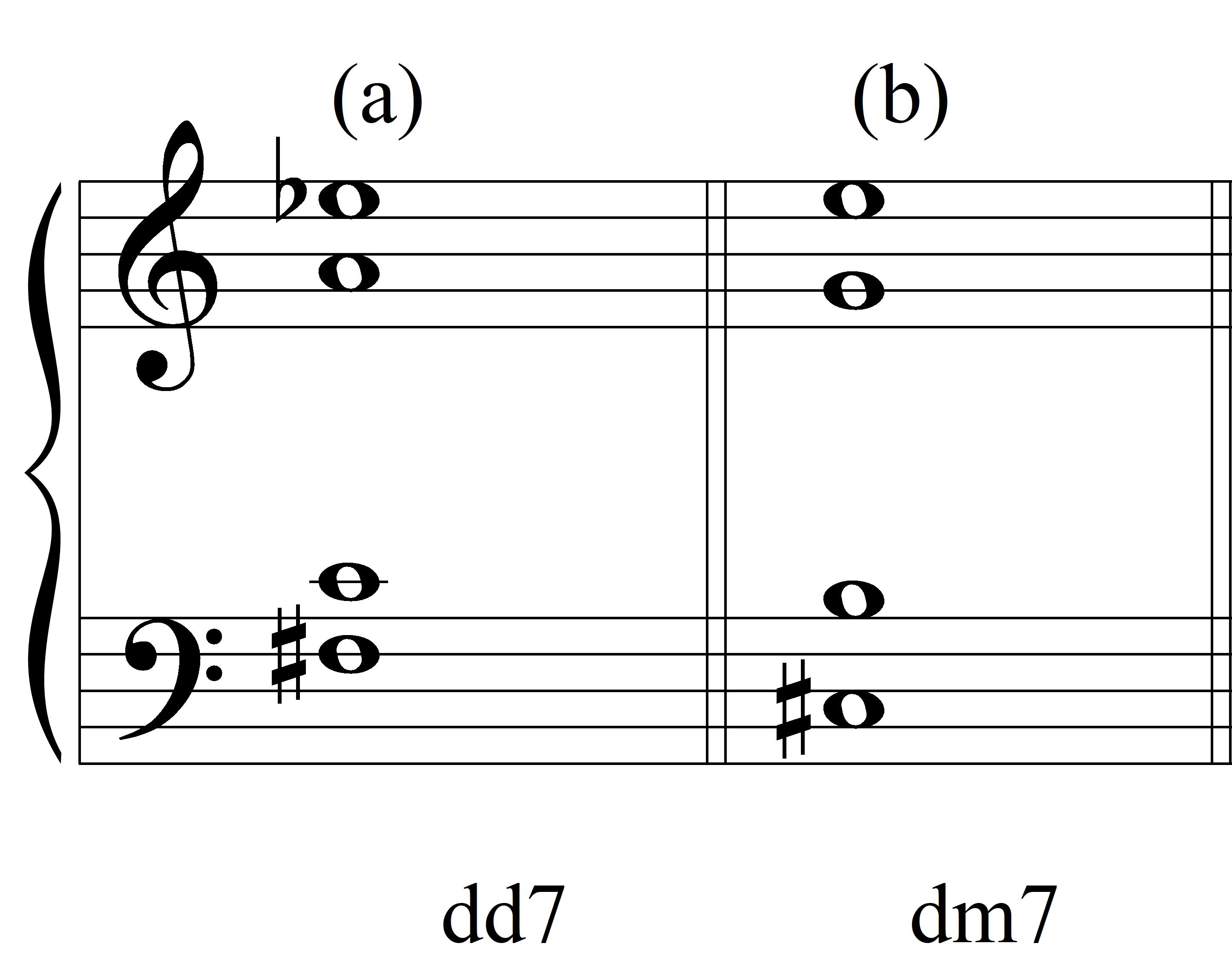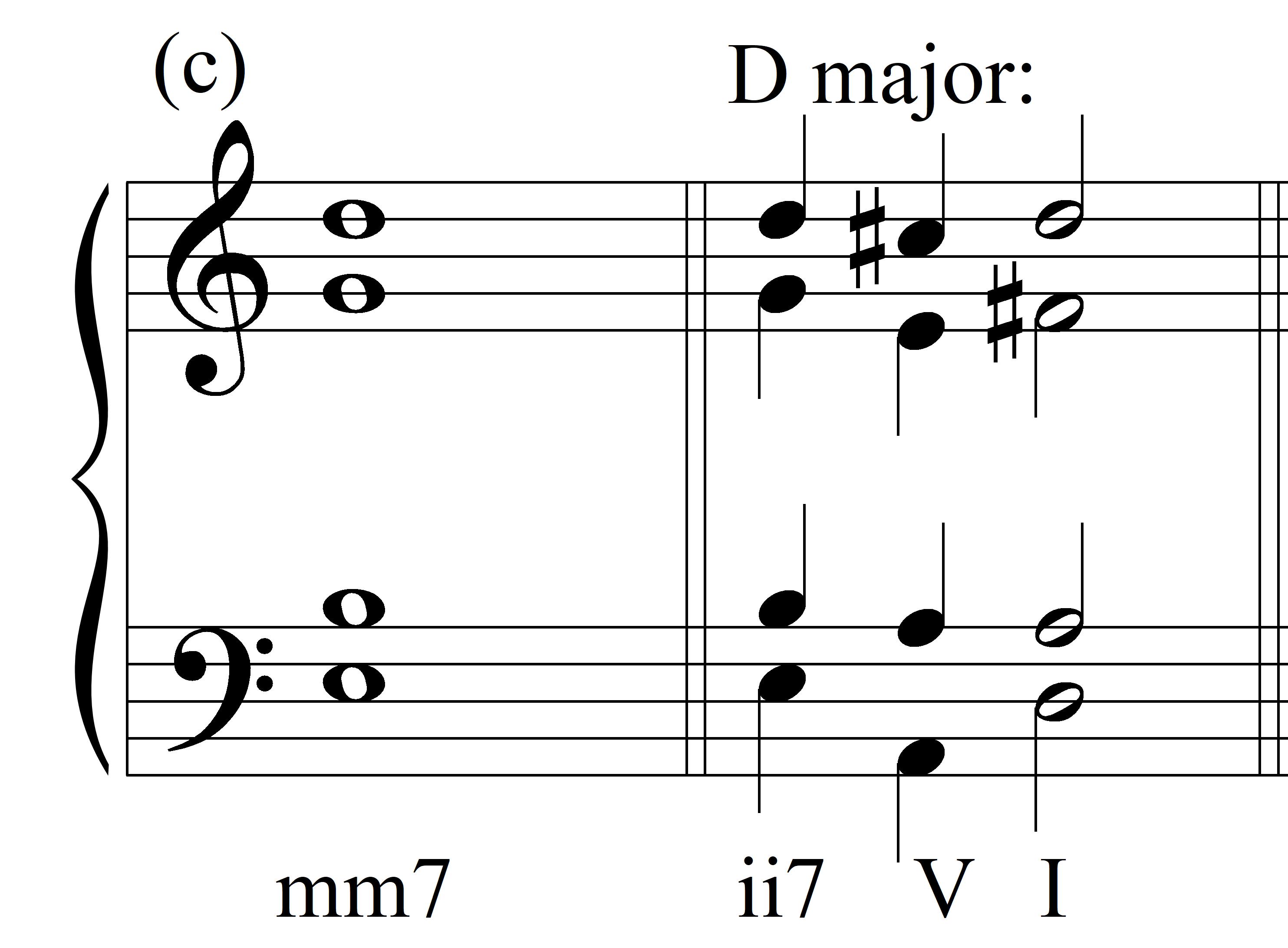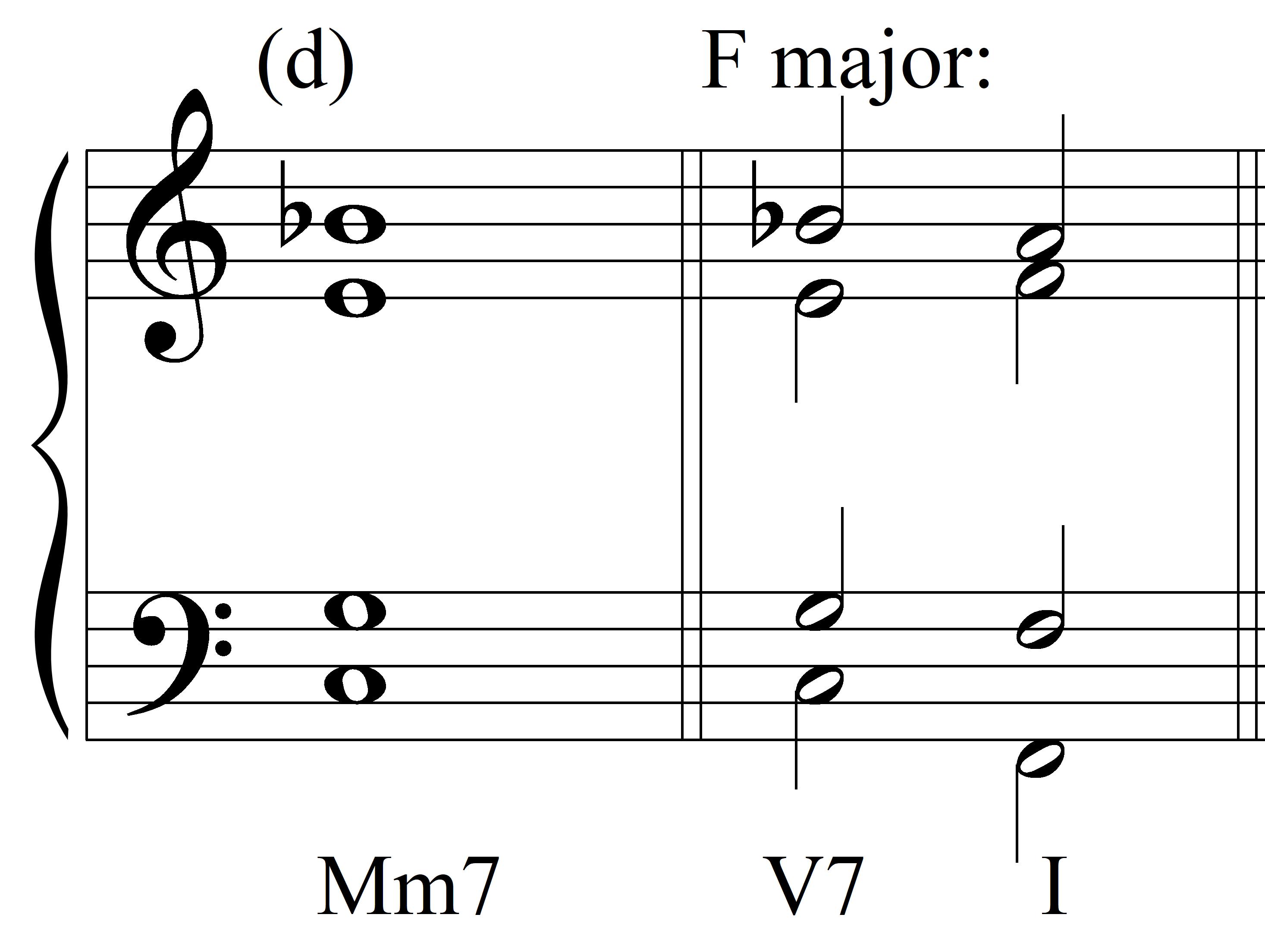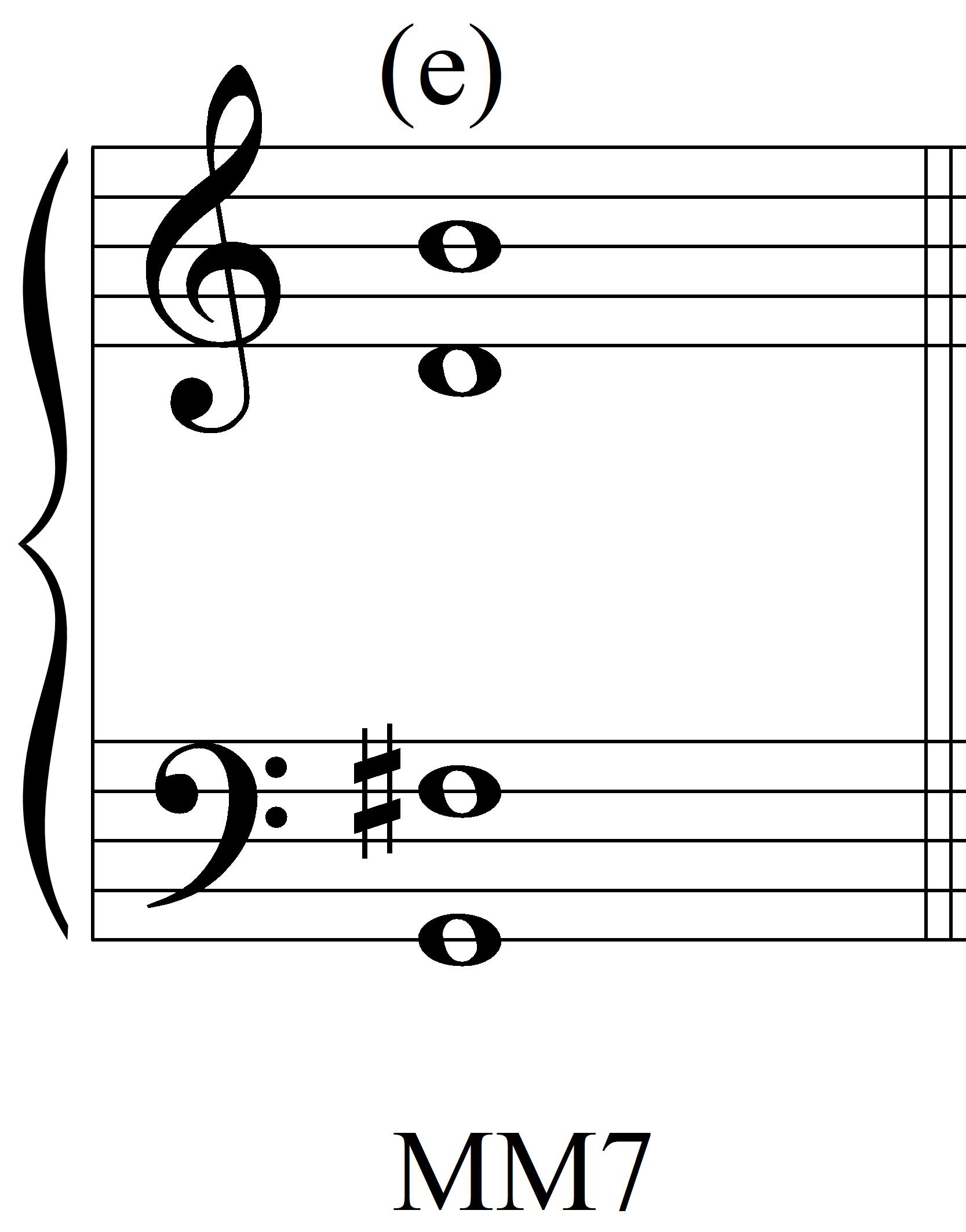Integrated Aural Skills 2019-20
Piano Practice - Identifying Compound Seventh Chords Functionally & Intervallically
Examples in Root Position
In these practice examples, you can see how compound seventh chords look like on the page, sound like when you play them on the piano, and feel like under your hands on the piano keys. That way you can engage your visual, auditory, and kinesthetic learning skills simultaneously as you acquire this new skill.

- In example (a), we can hear the strong dissonance of the double tritone. In this particular voicing, we can hear a tritone clearly between the two lower voices and another one between the two upper voices. Only the fully diminished seventh chord contains two tritones.
- In example (b), we can easily differentiate this half-diminished seventh chord from a fully diminished seventh chord because we can hear the interval of a minor seventh between the two lower voices. If it were a fully diminished seventh chord, the seventh would of course be a diminished seventh. Experiment! Move the tenor voice down a half step to make the chord fully diminished. Play dd7 and dm7 back to back and notice the coloristic difference between the chords.

In example (c), there are two easy ways to identify the chord quality.
- The presences of two perfect consonances (one between bass and tenor, the other between alto and soprano) indicates that the chord can only be minor-minor (mm) or major-major (MM), because these are the only two chord types of the five we are studying that contain not one but two perfect consonances.
- Another way to identify this chord is to ask yourself if you hear the “extreme” dissonance of the major seventh (or its inversion, the minor second) anywhere in the texture. Remember, mm7 is “bordered” by a minor seventh.
- In the second measure of this example is a progression where we often find mm7 in context, that is, as a pre-dominant. Play this progression through a few times, noticing how the voice-leading resolves into the cadence.
- Experiment – what would happen if you shifted the alto and soprano voices up to G-sharp and D-sharp? How would the chord quality change, and why?

Major-minor (Mm7) chords are the easiest to identify, because their very familiarity makes us recognize them quickly both in and out of context.
- In example (d), notice the presence of the perfect consonance between bass and tenor, and the tritone between alto and soprano. Only the major-minor and half-diminished seventh chords contain one perfect consonance and one tritone, but it is relatively straightforward to tell the difference between these two chord qualities because of the more “major” sound of Mm7.
- In the second measure of this example, this Mm7 chord is placed in its proper context as the dominant function in an imperfect authen tic cadence.

- In example (e), the “dead giveaway” is the presence of the major seventh between the bass and tenor voices. The major-major seventh chord (MM7) is the only one of the seventh chords we are studying to be bordered by the interval of a major seventh. If you hear a major seventh (or its inversion, the minor second) within the voices of a compound seventh chord, its chord quality can only be MM7.